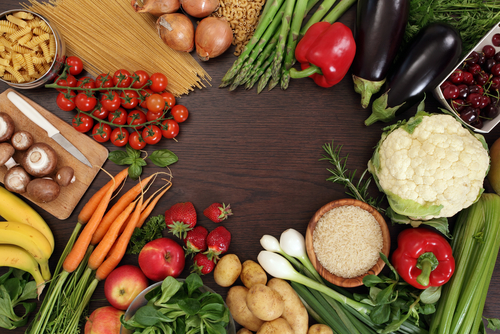The "Planetary Health Diet" – What’s it All About?
Posted:
2019-01-22
A report was launched on January 17, 2019 by The EAT- Lancet Commission on Food, Planet, Health that presents “a global  planetary health diet that is healthy for both people and planet” (1). (Note: to download the complete report you must log into your Lancet account or complete the free registration to the Lancet website). EAT is “a global, non-profit start-up dedicated to transforming our global food system through sound science, impatient disruption and novel partnerships” (2).
planetary health diet that is healthy for both people and planet” (1). (Note: to download the complete report you must log into your Lancet account or complete the free registration to the Lancet website). EAT is “a global, non-profit start-up dedicated to transforming our global food system through sound science, impatient disruption and novel partnerships” (2).
The EAT-Lancet Commission brought together “37 experts from 16 countries in various fields of human health, agriculture, political sciences and environmental sustainability to develop global scientific targets for healthy diets from sustainable food production” (3). With the population set to reach 10 billion people by 2050, researchers stressed the link between what we eat and human and planetary health. Future food production must be intensified in regards to sustainability to meet the needs of the growing population within the planetary limits for climate change, biodiversity loss, land and water use, as well as nitrogen and phosphorous cycles (1).
In this important report, authorities have attempted to look at “nutrition, health impacts, ecosystems and feasibility with culture” and provide strategic and practical information for policy development. It is basically calling for a transformation of the food we eat and ”getting it right with food will be an important way for countries to achieve the targets of the UN Sustainable Development Goals and the Paris Agreement on climate change” (1).
“Ensuring that all certified health professionals have a demonstrable level of competence surrounding planetary health diets”, the EAT-Lancet Commission prepared a brief for professionals (3): with information about what they should know and what they should do to contribute to the “Great Food Transformation” (1).
An overview of the diet recommendations include reducing the consumption of animal protein so that proteins should be from plant sources as much as possible and reducing the consumption of ultra-processed foods and added sugar. While this is nothing new, as we have been hearing these recommendations for years, what is new is the more specific guidelines for food group consumption (1,3):
- Nuts (peanuts and tree nuts) - 50 g a day
- Beans, Chickpeas, Lentils and Other Legumes (dried) - 50 g a day
- Soy Foods (dry) - 25 grams a day
- Fish - 28 g a day
- Eggs - 13 g a day (about 1.5 eggs per week)
- Meat and Poultry - 14 g a day of red meat and 29 g a day of poultry
- Dairy and Dairy Products (including cheese) - 250 g a day (the equivalent of one glass of milk)
- Carbs - Whole grains including rice, wheat and corn (dry) - 232 g a day and 50 g a day of starchy vegetables
- Vegetables and Fruit - vegetables (300 g) and fruit (200 g) a day.
The whole grains portions are adjusted to meet energy targets. In addition, the diet has room for 31 g of sugar and about 50 g worth of oils, such as olive oil, and no dairy fats such as butter.
For Additional Content:
References
- Willet W, Rockström J, Loken B, Springmann M, Lang T, Vermeulen S, et al. Food in the Anthropocene: the EAT-Lancet Commission on healthy diets from sustainable food systems. Lancet. 2019 Jan 16. pii: S0140-6736(18)31788-4. doi: 10.1016/S0140-6736(18)31788-4. Citation available from: https://www.ncbi.nlm.nih.gov/pubmed/30660336
- EAT Forum – About EAT. [cited 2019 Jan 21]. Available from: https://eatforum.org/about/
- EAT- Lancet Commission. Brief for healthcare professionals. January 2019. Available from: https://eatforum.org/content/uploads/2019/01/EAT_brief_healthcare-professionals.pdf